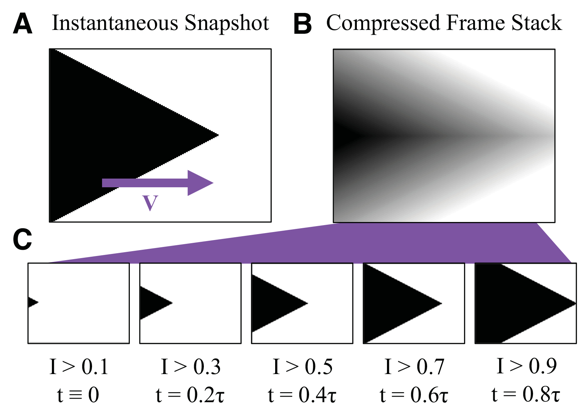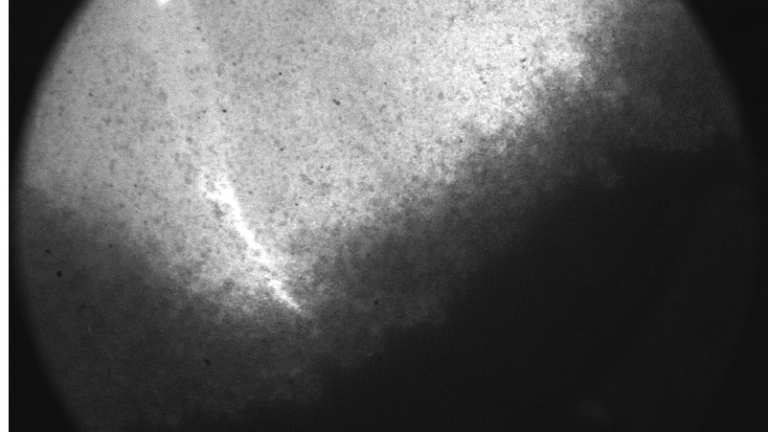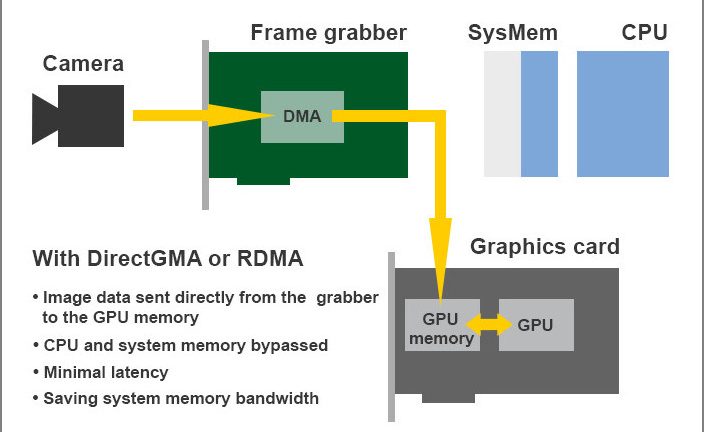
High speed imaging can be achieved with any camera, as has recently been demonstrated with the Virtual Frame Technique. Using this method, any monotonic phenomenon that is imaged instantaneously with perfect contrast (such that the image is binary) can be recorded at high rates by increasing the exposure time of the camera. Thus, complex temporal dynamics can be recorded at high rates and high resolution, averting the traditional trade-off between size of the region of interest and imaging rate. In this project we explore the limits of this method, using a dual-approach of experimental demonstration and theoretical analysis.

Fracture of brittle materials is an established field, and though there are many outstanding questions, we also have a working theory in the linear-elastic limit. Most often, real materials are not ideally brittle – these materials can flow or re-arrange internally in order to accommodate stresses. Using direct imaging, we will study how the micro-scale rearrangements inside such materials can lead to macroscopic failure.

(MSc. level) Exploring and processing the massive data captured in high resolution profilometry overwhelms the system memory and is CPU workload intensive. In our lab, we are using the state of the art profilometry setup coupled with an Active Silicon acquisition card, which are compatible with NVIDIA GPUDirect.
We aim to minimize data image latency and remove the overhead of the CPU interaction. In the current project it is required to
- Employ GPUDirect API for (raw) images transfer from the Active Silicon interface card into GPU buffer using Direct Memory Access engine (GPU RDMA), bypassing the system memory
- Utilize CUDA programming to apply filters, convolution, data compression, and matrix-vector operations running on the NVIDIA card
- Use GPUDirect Storage to transfer the compressed data to the system storage
- Optimize steps 2 and 3 to minimize data transfer latency
Ringing water bells – Bachelor’s / Master’s level
The classical water bell is a beautiful object – it looks stationary, and yet is formed by the flow of water, which is shaped by the action of surface tension. While the water bell problem was solved a century ago, the water bell remains a dynamic object, and there is much to understand about driven sheets of fluids. Here, we will drive the water bell into unsteady shapes, and probe it’s response. The interplay between geometry and the physics of this object could lead to new developments in our understanding of fluid sheets, and intertio-capillary phenomena.